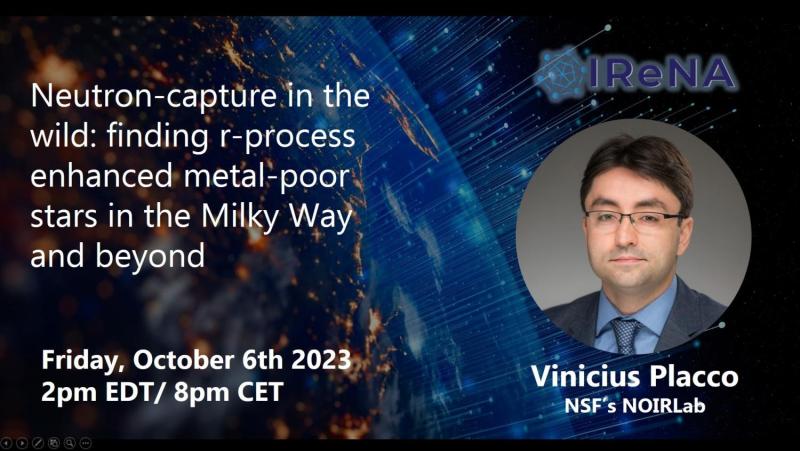Data
Neutron-capture in the wild: finding r-process enhanced metal-poor stars in the Milky Way and beyond featuring Vinicius Placco (NSF NOIRLab)

Hosted by: Avrajit Bandyopadhyay (University of Florida)
The lowest metallicity stars in the Milky Way Halo are the fossil records of the earliest star-forming environments in the universe. Their chemical abundance patterns help us understand primordial nucleosynthesis, the mass function of the first stars, and the pathways that led to the chemical complexity we observe today. However, there is still debate about when (and for how long) the universe transitioned from metal-free to the first chemical enrichment episodes that triggered low-mass star formation. In that context, metal-poor stars with enhancements in elements formed by the r-process can hold valuable clues to this intricate cosmic puzzle. Such stars are rare and difficult to find, so I'll review some of the methods and tools astronomers use to increase their chances of identifying these chemically peculiar stars within the ever-increasing astronomical stellar databases. I will also talk about the serendipitous discovery and chemo-dynamical analysis of SPLUSJ1424, an old, low-mass, extremely metal-poor halo star enhanced in elements formed by the r-process. At [Fe/H]=-3.39, this is one of the lowest metallicity stars with measured Th and has the highest Th/Eu ratio observed to date, making it part of the "actinide-boost" category. Analysis suggests that the gas cloud from which SPLUSJ1424-2542 was formed must have been enriched by at least two progenitor populations, including a supernova explosion of metal-free stars and a neutron star merger event.
